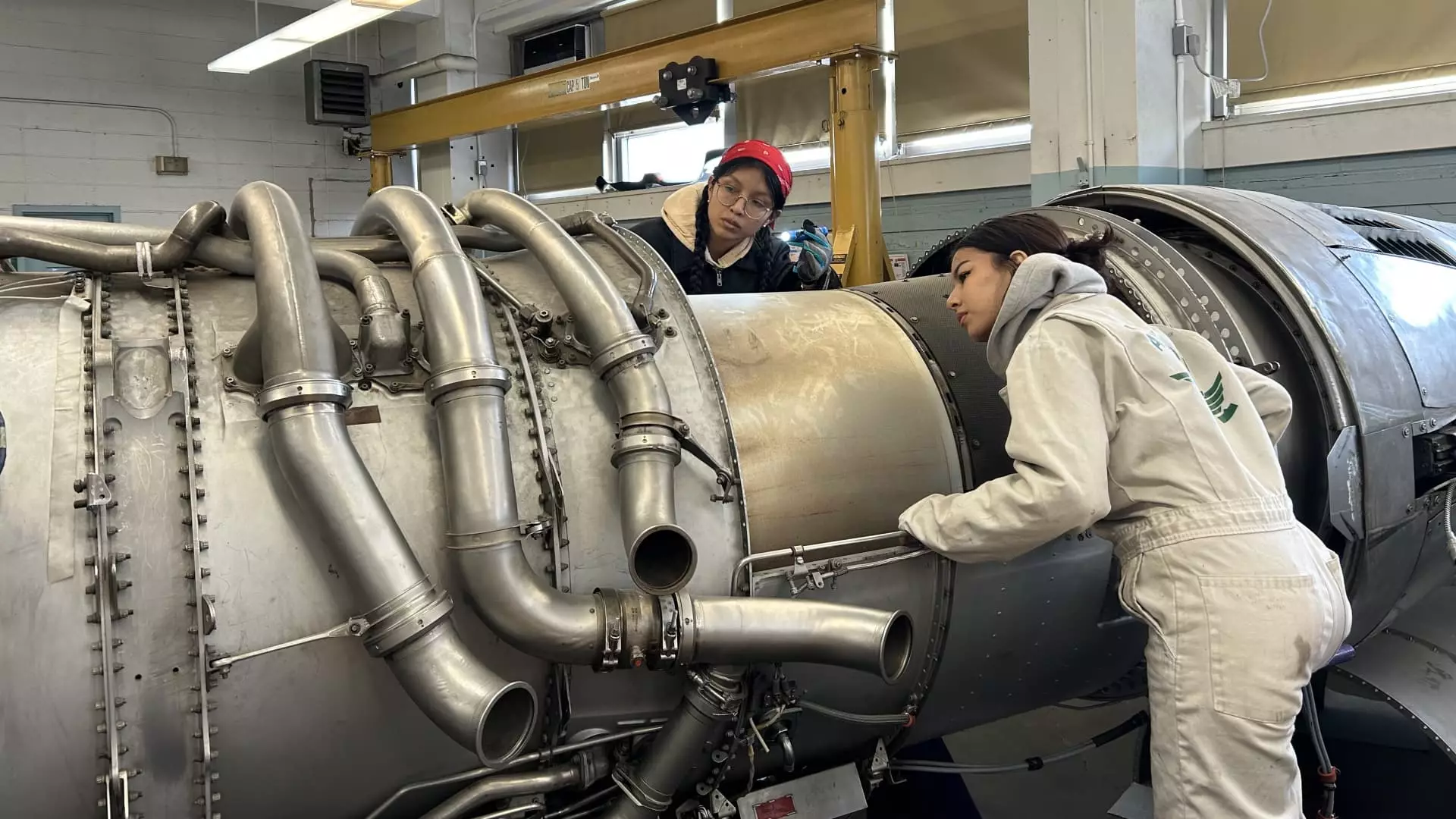In an era where technological innovation is paramount, the aviation industry’s workforce is on the brink of a crisis. The fact that the average age of a certified aircraft mechanic in the United States is a staggering 54—not to mention the alarming statistic that 40% of these professionals are over 60—paints a troubling picture of an industry facing a generational gap. A recent report from the Aviation Technician Education Council underscored an undeniable truth: the United States is projected to be short 25,000 aircraft technicians by 2028. As our society continually pushes for higher manufacturing job creation, this statistic demands immediate attention and action.
While President Trump spoke fervently about revitalizing American manufacturing, he might not have fully grasped the complexities underpinning the aviation sector. The reality is that while the need for skilled workers is increasing, the existing talent pool is aging rapidly. The emphasis on bringing jobs back to American shores must extend beyond simply creating positions; it should also focus on nurturing a new generation that possesses the relevant skills.
Manufacturers’ New Strategies
Faced with impending retirements and an ongoing wave of resignations accelerated by the COVID-19 pandemic, major players in the aviation field are knee-deep in strategic reforms. Companies like GE Aerospace, despite their overwhelming strength and robust hiring practices, still rely heavily on an intricate network of suppliers that are catching up post-pandemic. However, they have made strides in employee retention, offering FAA certifications for mechanics as part of on-the-job training.
It is commendable that GE and similar companies are beginning to yield to pressure and raise wages—the median pay for aircraft technicians now sits at just over $79,000, a stark contrast to the national median income of $49,500. This is a move in the right direction, demonstrating a willingness to compensate skilled workers properly, but it still feels insufficient. Many technicians argue that while salaries are increasing, they do not adequately reflect the skill level and dedication required for the job.
The Challenge of Attracting New Blood
Moreover, the industry battles the stigmatization of manufacturing jobs, often seen as less appealing compared to higher-tech professions. It’s not just external factors at play, however; the lack of geographic mobility poses an economic barrier to attracting talent. Many young workers are hesitant to relocate, making recruiting efforts even more complicated for manufacturing companies looking to replenish their ranks.
It is imperative that the aviation sector doesn’t just wait for young talent to come knocking. The industry’s relationship with educational institutions must be fortified. Companies like American Airlines are already taking proactive steps by engaging high school students to cultivate interest early, but this needs to go further—it should involve comprehensive educational reform focused on promoting technical and vocational training, presenting these jobs as the high-tech, lucrative careers that they are.
Cultivating Interest in Aviation Careers
The opportunity for growth indeed exists, as demonstrated by schools like Aviation High School in Queens, New York, which has increasingly captured the interest of students. With 5,000 applicants seeking a pathway into the aviation industry this year alone, this indicates a significant appetite for opportunities within the field. Students like Sam Mucciardi, who is faced with making critical career decisions, represent a generation keen on trading the traditional four-year college experience for hands-on training in fields that promise excellent long-term financial returns.
However, this hunger for skilled labor must be met with a coordinated effort from industry leaders, educators, and policymakers to ensure a steady pipeline of new talent. By dispelling outdated perceptions about manufacturing and showcasing the high-tech nature of modern aviation, companies can inspire a younger workforce to consider a career in this vital sector.
Policy Implications and Industry Consequences
It’s troubling that amidst a nationwide dialogue about employment and economic recovery, critical challenges within the aviation industry receive less attention than they deserve. Air traffic controllers and other essential roles face similar staffing shortages, threatening safe and efficient air travel. If the Trump administration aims to revitalize American manufacturing, it must prioritize the aviation sector as a critical component.
The dual reality is glaring: as other industries slump, high-value economic sectors like aviation continue to offer promising careers, but they are desperately short of skilled labor. The commitment to creating jobs must hinge on ensuring that new generations are adequately trained and excited to enter the field. It is a duty not just to the economy, but to the safety and efficacy of air travel across the nation.
Ultimately, if we do not act now to address this impending talent crisis, we risk losing a crucial piece of our industrial identity. It’s time to take the necessary steps toward building a future-ready workforce in aviation.

